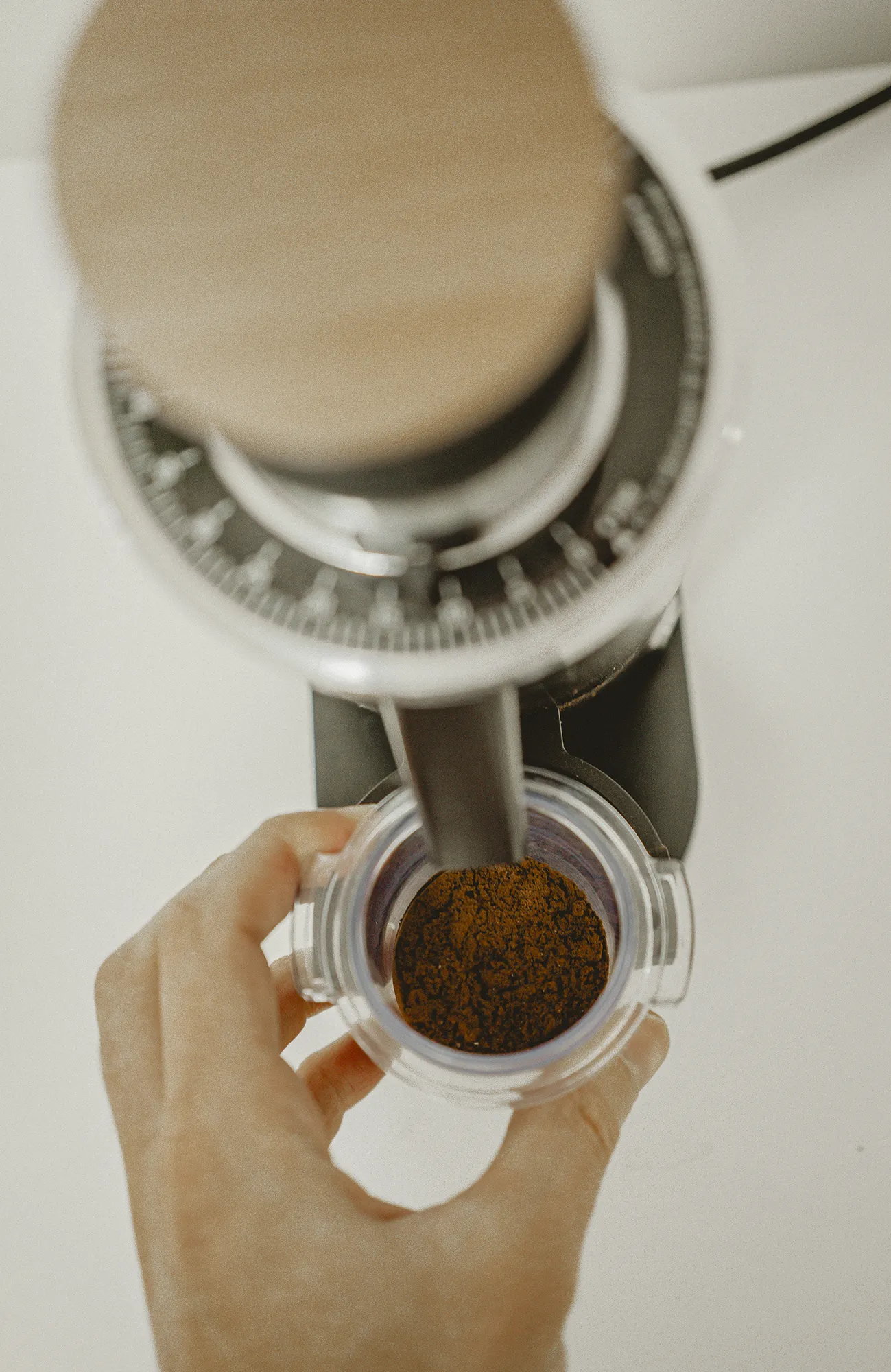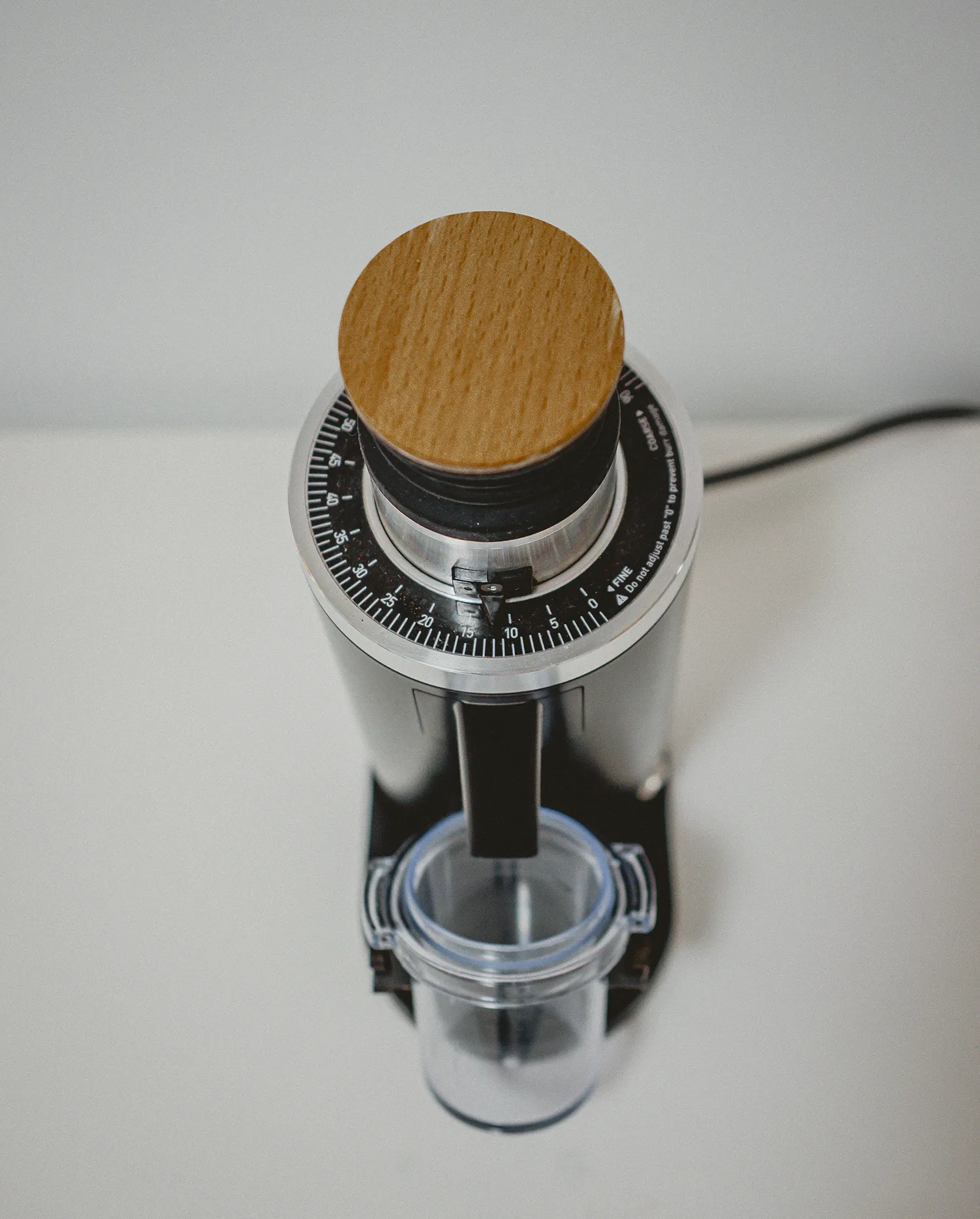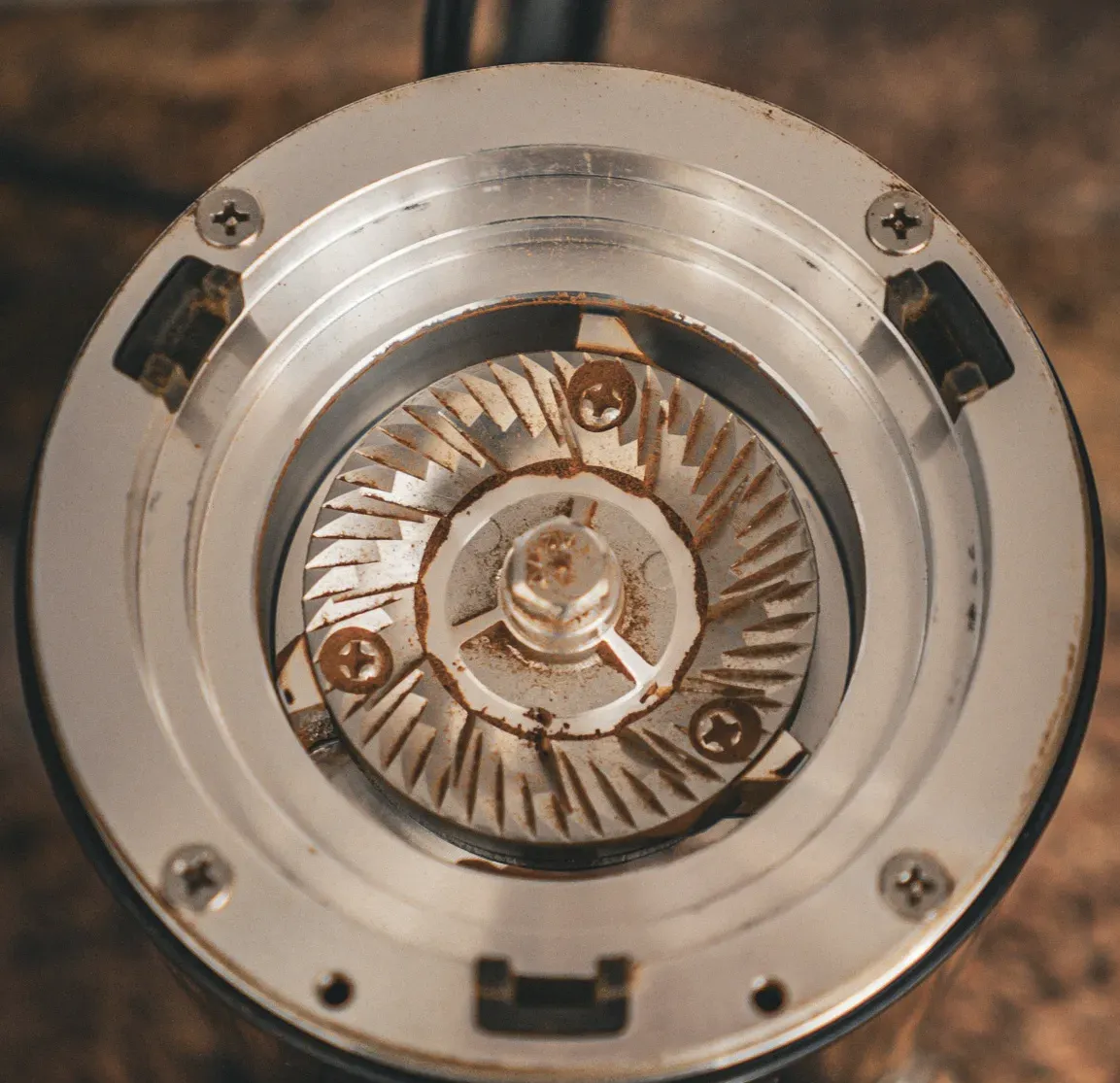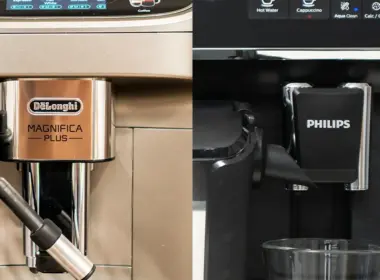The MiiCoffee DF54 is considered by many experts as the best grinder in terms of value for money at the moment. Manufactured in China, it is distributed globally under two brands: MiiCoffee and Turin, so you can find it as MiCoffee DF54 or Turin DF54.
Despite being a rebrand of a product manufactured in China, the DF54 exudes quality from every angle, from its design to its materials, and it’s a grinder that gives you more than its price suggests.
In fact, it is so popular that it has been out of stock for a long time; it recently became available again on Amazon, and I didn’t think twice about buying it to see firsthand if the reviews were correct. After almost a month of testing it, here is my review.
DF54 Single Dose Coffee Grinder
Burr type: 54 mm stainless steel flat burrs | Motor: 150 W, 1400 RPM | Grind adjustment: Stepless (continuous adjustment) via metal dial | Retention: <0.1 g (almost zero retention) | Anti-static: Integrated plasma generator to eliminate static | Anti-popcorn disc: Included, prevents beans from popping while grinding | Hopper capacity: Up to 20 g without hopper extension, 50 g with extension | Body material: Aluminum with powder-coated finish | Dimensions (L × W × H): 17.8 × 11.4 × 30.5 cm | Weight: 4.5 kg | Compatibility: 58 mm dosing cup compatible with standard portafilters | Ease of cleaning: Tool-free removable design | Included accessories: Hopper with wooden lid, 58 mm dosing cup, rubber adapter, manual.
For those who don’t know, here are some technical details: it is a 54 mm stainless steel flat burr grinder with a 150W motor, and, as you can see in the images, it is a single-dose grinder, or single-dose for the more modern baristas.
The fact that it has flat burrs is its biggest point of distinction compared to the vast majority of grinders in this price range, which typically use conical burrs. In this sense, the DF54 is not only the best flat burr grinder for under $300: it is the only one.

That fact alone speaks very well for its value for money, but the feeling of having bought something of much higher quality than its price suggests is even more evident when you see and touch its black aluminum body with a matte finish —or, as the manufacturer says, a powder-coated finish. In any case, it feels elegant and sturdy, with a design and appearance superior even to many grinders that cost twice as much.
The dosing cup stands out quite a bit, as you can see, it is plastic and transparent. This offers the advantage of seeing how the coffee falls into the cup, but I must say it clashes with the grinder, both in appearance and in material quality. This cup has a diameter of 58 mm; I have tested it with the Baristeo Intima portafilter, which is 58 mm, and it fits perfectly, but the same does not happen with my Bambino Plus portafilter, which is 54 mm. What I did was buy this black 54 mm cup, which not only matches in color but fits perfectly in the portafilter.
You can also use the grinder’s holder to dose directly into the portafilter, though I find it only works with 58 mm portafilters. As always in these cases, it is advisable to use a dosing funnel, though the space in this holder is so small that it is difficult to use one; therefore, direct dosing into the portafilter is not advisable. In fact, the manufacturer itself recommends using the dosing cup, so you can see that this is really an option they haven’t given much attention to.
Let me tell you what I liked most about this DF54. The first thing, without a doubt, is that it grinds very well, very fine, and very consistently. I must confess that it is the first flat burr grinder I have tried at home. Something often said in the barista world is that this type of burr achieves greater clarity and separation of flavors in espresso, and although I am not an expert in coffee tasting, it is true that the different flavor notes are more noticeable.

Also, I found it very easy to calibrate the grinder for espresso. As you can see, it has an external ring with 90 grinding adjustments, which are stepless, so you can move the adjustment ring smoothly and leave it exactly where you want. The precision is maximum, and calibration is extremely easy; so far, I have tried three different varieties of coffee beans and achieved a perfect extraction with just a couple of tests with each.
I was also very surprised by the retention and static. For example, the retention is very low — 0.1 or, at most, 0.2 grams — if you pour all the beans into the hopper before starting the motor. But retention becomes nonexistent if you start the grinder first and then slowly add the beans, a technique known as slow feeding. In this case, there is absolutely no retention even with lightly roasted beans, which I found really incredible. For occasions when there is a bit of retention, the bellows on the lid are very simple but work very well.
The same goes for static. According to its specifications, the DF54 has a plasma generator at the outlet, and this is evident in the outlet, which accumulates very few coffee residues. There is also a very useful piece in the hopper —an anti-popcorn disc that prevents coffee beans and ground coffee particles from flying out.
However, inside the grinder and its burrs, small coffee residues accumulate and are difficult to clean, especially those that remain around the screws, between the burrs, or in the chamber gaps. It becomes essential to use a brush, and in this case it is advisable to have a small handheld vacuum to clean the chamber.
The DF54 comes with a small, stiff brush, but it only cleans the inside of the grinder’s outlet, where some residues remain —though not many —thanks to the good work of the plasma generator I mentioned earlier.

The mechanism for removing the disc with the adjustment dial and the upper burr is somewhat strange, as there is no stop or mark indicating that the disc is correctly assembled. And since the DF54 comes without an instruction manual in the box (it is only available online, and in English), I had to investigate to find out how it is done. Basically, to remove the disc, you have to unscrew counterclockwise, and to put it back, you have to screw clockwise until you feel resistance and it becomes increasingly difficult to screw. I must say it is a strange, unintuitive mechanism that carries the risk that, if you’re not careful, the upper and lower burrs can come into contact and damage them.
That is, maybe, what I liked least about the DF54, but in everything else, it is a spectacular grinder: it is made with very good materials, grinds coffee wonderfully, does so with very little retention and static; it also does so not very noisily, and it is compact and elegant.
You can’t ask for more from such an economical grinder. Without any doubt, it is THE GRINDER to buy for not very affluent budgets, and especially for espresso fanatics like me, and the only problem when buying it may be the high demand it has: when it is back in stock on Amazon, the units fly, so if you are interested in it and see it in stock, don’t hesitate and buy it.
If you can’t find it in stock, an alternative is the Fellow Opus. Although it has many more retention and static problems, it is very capable for fine grinding espresso and is easier to clean, though in general, I think the DF54 is far superior.
The other two alternatives in this price range are the Sage Smart Grinder Pro and the Baratza Encore ESP , although both are far from the performance and value for money of this MiiCoffee DF54.








